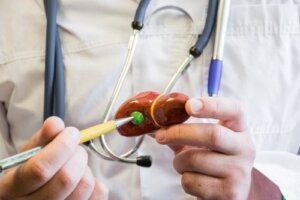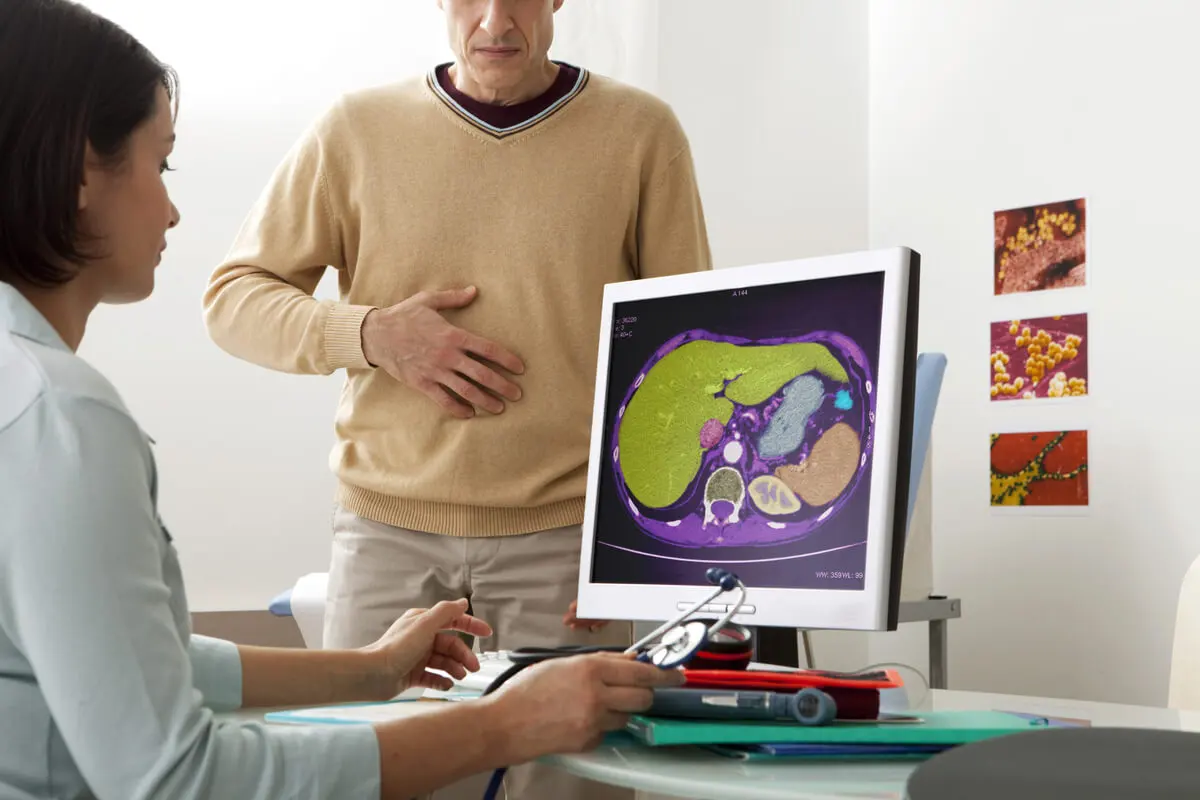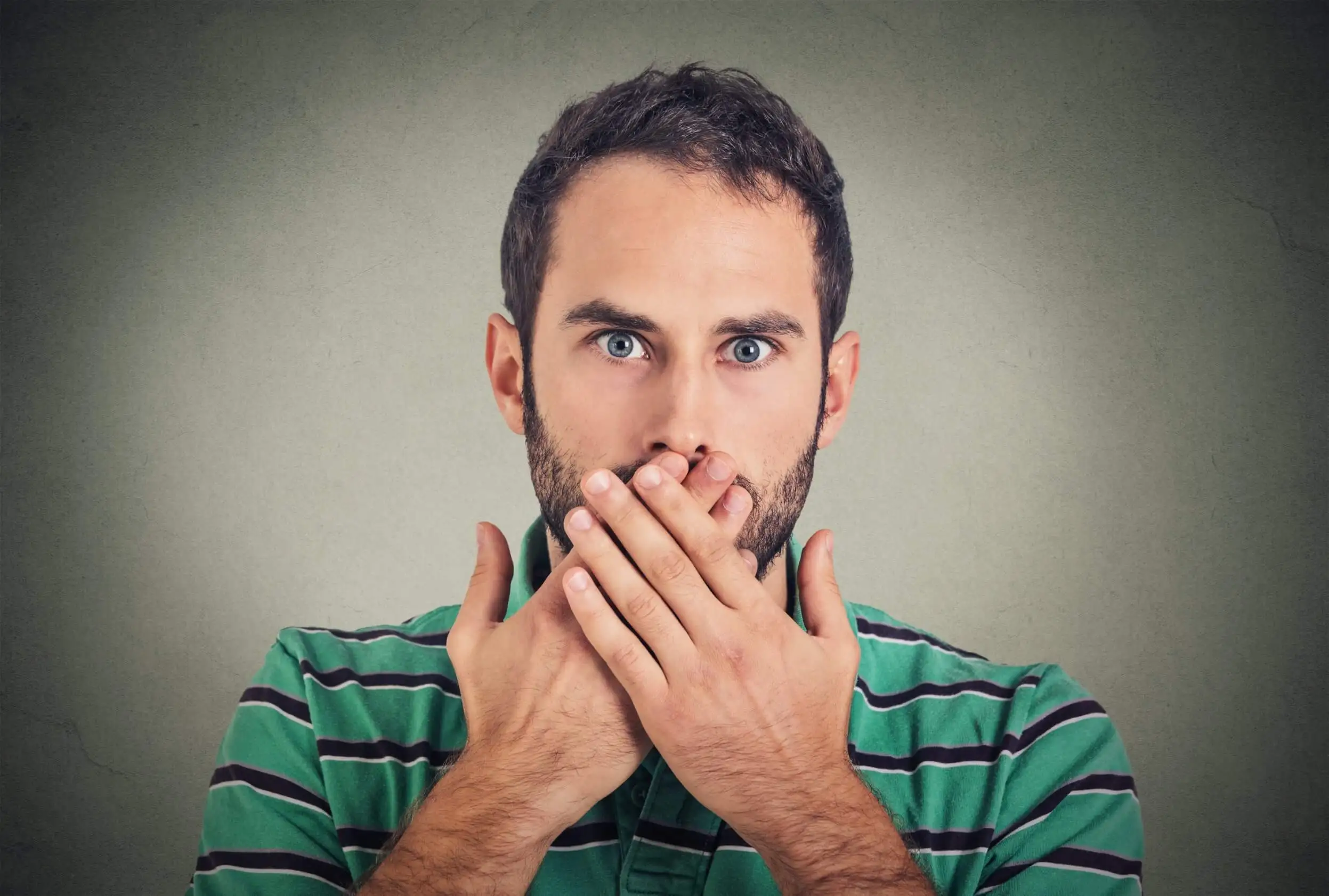10 Symptoms that Can Alert You to a Gallbladder Problem


Reviewed and approved by the doctor Nelton Abdon Ramos Rojas
A problem in the gallbladder usually develops due to an alteration in the composition of bile. To understand it better, it’s first worth remembering that this small pear-shaped organ – located under the liver – stores and releases bile, a substance whose main function is to help in the breakdown of fat.
Once food reaches the small intestine, the gallbladder contracts, and the Oddi sphincter opens. Then, bile moves through it to subsequently fulfill its digestive function. However, several alterations can affect this process, resulting in gallbladder diseases. How can you recognize them?
What do you need to know to understand gallbladder problems?
When the stomach and intestine digest food, bile is released through the common bile duct. After that, it fulfills its function in the small intestine.
Diseases associated with its functioning usually occur when something obstructs the passage of bile through the ducts. This is almost always due to the presence of gallstones, which are formed by substances that accumulate and harden, either because they’re difficult to digest or because they’re ingested excessively.
And although its functioning is not essential for life, the development of any alteration in the gallbladder can lead to symptoms that affect a person’s quality of life. That’s why it’s so important to be alert and seek timely medical intervention to correct a gallbladder problem.

We think you may be interested in reading this, too: The Best Diet After a Cholecystectomy or Gallbladder Removal
The possible symptoms of a gallbladder problem
Initially, it’s often difficult to detect a gallbladder problem due to the absence of obvious symptoms. It’s possible that clinical manifestations may occur when the disease has progressed. In any case, it’s useful to know what signs to look out for. Let’s take a look at them.
1. Abdominal pain
Abdominal pain is one of the main warning signs of a gallbladder problem. It is also known as “biliary colic” and is usually located in the upper right part of the stomach, just below the ribs.
As explained in an article reported in the National Center for Biotechnology Information, this pain is usually caused by a blockage of the bile ducts due to stone formation. It’s often more intense after eating large, irritating meals.
A particular feature of this pain is that it comes and goes. It often arises with intensity after very fatty meals, as the gallbladder contracts to release bile and aid digestion.
2. Indigestion
Due to the role of the gallbladder in the digestive process, disturbances in its function often cause continuous episodes of indigestion and gas.
- When the bile juices do not reach the intestine correctly, either due to an obstruction or inflammation of the ducts, digestion is heavier and the abdomen tends to swell.
- It’s also common to present belching, flatulence, and other symptoms typical of difficult and slow digestion.
- The discomfort tends to occur after meals, especially when these are too copious or abundant in fat.
3. Nausea and vomiting
Sudden nausea and vomiting may indicate the presence of gallstones or inflammation of the gallbladder. Although the exact reason for this symptom is unknown, a publication in BMJ Case Reports suggests that it may be due to a cholecystoduodenal fistula.
4. Lack of appetite
Sudden loss of appetite is a symptom that can alert various health problems. Therefore, when it occurs for a prolonged period of time, it’s necessary to consult a doctor. Sometimes, it may be due to a gallbladder problem, such as the formation of gallstones or inflammation of the ducts.
5. Jaundice
The accumulation of bile in the gallbladder can cause liver and digestive difficulties that, over time, can cause the skin and the whites of the eyes to take on a yellow hue (jaundice). All this is due to the fact that the substance remains in the blood and easily reaches the cells and tissues of the body.
However, it should be noted that not all cases of cholestasis manifest themselves with this symptom. It’s possible that jaundice may be generated after hepatobiliary surgery either due to an injury or the leakage of the bile duct.
6. Changes in the urine
Although alterations in the urine are usually related to a kidney health problem, it’s essential to keep in mind that they can also be caused by a gallbladder disorder.
The bile pigments that accumulate with the stones cause the urine to acquire a yellowish or brownish color. In the case of having this symptom, we should go to the doctor or emergency room as soon as possible.
7. Diarrhea
Digestive disorders caused by a malfunction of the gallbladder are a cause of diarrhea episodes. This symptom usually occurs along with abdominal swelling and pain that gradually spreads throughout the belly.
8. Changes in stool
Gallstones are formed by a mixture of bile, cholesterol, and bilirubin which, as they harden, hinder digestion and increase pain. Because they can grow significantly, the ducts become blocked and can cause alterations in the stool, such as a pale or clay-like color.
9. Halitosis
Gallbladder dysfunction, gallbladder removal, or the presence of gallstones can manifest with bad breath (halitosis). Since bile can’t be used optimally during the digestive process, unpleasant belching and bad oral odor are generated.

10. A fever
The chills and episodes of fever that appear with some digestive system disorders may a sign of the development of gallstones in the gallbladder or an infection in the gallbladder ducts. According to information from Johns Hopkins Medicine, about one-third of patients with gallbladder problems suffer from these symptoms.
Like this article? You may also like to read: Five Tips to Improve Your Liver and Gallbladder Function
Are you experiencing these symptoms? If so, see your doctor!
A malfunctioning gallbladder can lead to serious health complications when there’s no timely intervention. For this reason, if these symptoms occur, it’s essential to see a doctor and receive a diagnosis.
It should be noted that these symptoms may indicate several health problems, some of which are even unrelated to the gallbladder. For this reason, it’s decisive that a physician performs the corresponding tests and determines the appropriate treatment according to the case.
All cited sources were thoroughly reviewed by our team to ensure their quality, reliability, currency, and validity. The bibliography of this article was considered reliable and of academic or scientific accuracy.
- Jones MW, Small K, Kashyap S, et al. Physiology, Gallbladder. [Updated 2022 May 8]. In: StatPearls [Internet]. Treasure Island (FL): StatPearls Publishing; 2022 Jan-. Available from: https://www.ncbi.nlm.nih.gov/books/NBK482488/
- Jones MW, Hannoodee S, Young M. Anatomy, Abdomen and Pelvis, Gallbladder. [Updated 2021 Nov 8]. In: StatPearls [Internet]. Treasure Island (FL): StatPearls Publishing; 2022 Jan-. Available from: https://www.ncbi.nlm.nih.gov/books/NBK459288/
-
Housset C, Chrétien Y, Debray D, Chignard N. Functions of the Gallbladder. Compr Physiol. 2016 Jun 13;6(3):1549-77. doi: 10.1002/cphy.c150050. PMID: 27347902.
-
JARAMILLO, D. G. (2009). Clasificación y fisiopatología de los cálculos biliares. Universitas Médica, 50(1), 91-97
-
Sigmon DF, Dayal N, Meseeha M. Biliary Colic. [Updated 2022 Aug 1]. In: StatPearls [Internet]. Treasure Island (FL): StatPearls Publishing; 2022 Jan-. Available from: https://www.ncbi.nlm.nih.gov/books/NBK430772/
- Diehl AK. Symptoms of gallstone disease. Baillieres Clin Gastroenterol. 1992 Nov;6(4):635-57. doi: 10.1016/0950-3528(92)90044-f. PMID: 1486206.
- Joseph A, Samant H. Jaundice. [Updated 2022 Aug 8]. In: StatPearls [Internet]. Treasure Island (FL): StatPearls Publishing; 2022 Jan-. Available from: https://www.ncbi.nlm.nih.gov/books/NBK544252
- Gallbladder Disease. (n.d.). Wake Forest Baptist Health. Available from: https://www.wakehealth.edu/condition/g/gallbladder-disease
- Gallbladder Disease. (n.d.). Johns Hopkins Medicine. Available from: https://www.hopkinsmedicine.org/health/conditions-and-diseases/gallbladder-disease#:~:text=Symptoms%20of%20chronic%20gallbladder%20disease,Jaundice
- Habba Syndrome. (n.d.). Gastrointestinal Society. Available from: https://badgut.org/information-centre/a-z-digestive-topics/habba-syndrome/
- McGowan DR, Norris JM, Zia K. Vomiting gallstones as a presenting feature of small bowel obstruction secondary to inflammatory stricture. BMJ Case Rep. 2013 Apr 22;2013:bcr2013008819. doi: 10.1136/bcr-2013-008819. PMID: 23608850; PMCID: PMC3645219.
- Njeze GE. Gallstones. Niger J Surg. 2013;19(2):49–55. doi:10.4103/1117-6806.119236
- Purca Romero, F. G. (2017). Halitosis, etiologia, diagnostico, tratamiento. http://repositorio.uigv.edu.pe/bitstream/handle/20.500.11818/1341/TRABAJO%20DE%20SUFICIENCIA%20FELIPE%20GENARO%20PURCA%20ROMERO.pdf?sequence=2&isAllowed=y
- Stinton LM, Shaffer EA. Epidemiology of gallbladder disease: cholelithiasis and cancer. Gut Liver. 2012;6(2):172–187. doi:10.5009/gnl.2012.6.2.172
- Shah R, John S. Cholestatic Jaundice. [Updated 2022 Jul 12]. In: StatPearls [Internet]. Treasure Island (FL): StatPearls Publishing; 2022 Jan-. Available from: https://www.ncbi.nlm.nih.gov/books/NBK482279/
- Top Five Signs That You’re Having Gallbladder Problems. (2017). CHI Saint Joseph Health. Available from: https://www.chisaintjosephhealth.org/news/top-five-signs-that-youre-having-gallbladder-problems-archived
- Bad Breath From Gut: What Issue Could I Have?. (n.d.). Centre for GI Health. Available from: https://centreforgastrointestinalhealth.com.au/resources/reasons-for-bad-breath-from-gut/#:~:text=Your%20gallbladder’s%20role%20is%20to,smell%20similar%20to%20rotten%20eggs.
- Poniewierka E, Pleskacz M, Łuc-Pleskacz N, Kłaniecka-Broniek J. Halitosis as a symptom of gastroenterological diseases. Prz Gastroenterol. 2022;17(1):17-20. doi: 10.5114/pg.2022.114593. Epub 2022 Mar 18. PMID: 35371354; PMCID: PMC8942002.
This text is provided for informational purposes only and does not replace consultation with a professional. If in doubt, consult your specialist.








